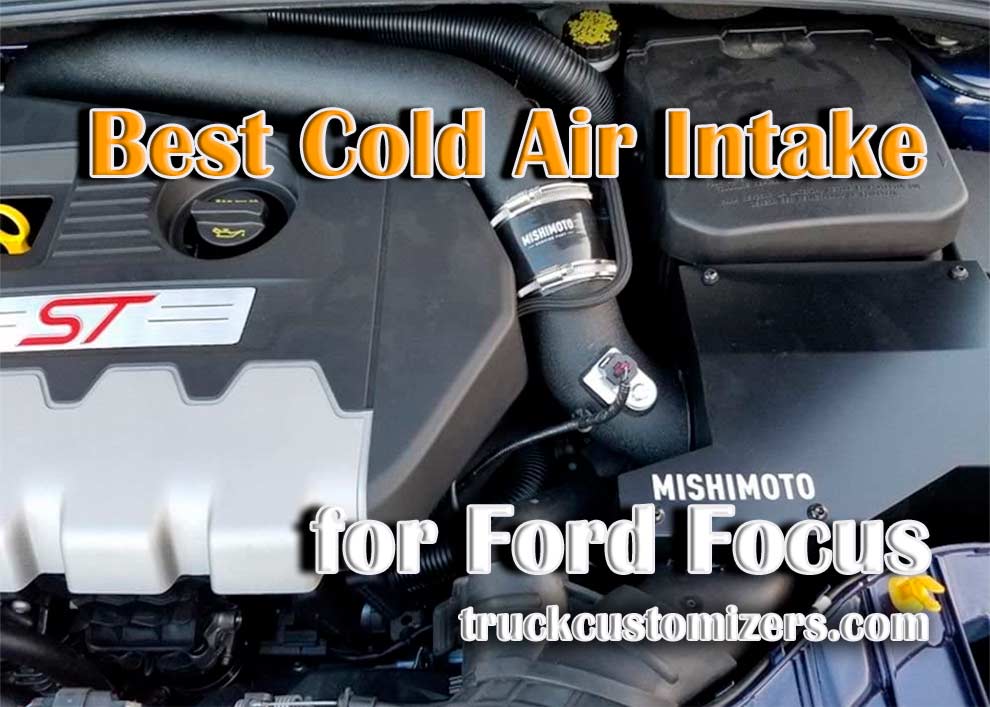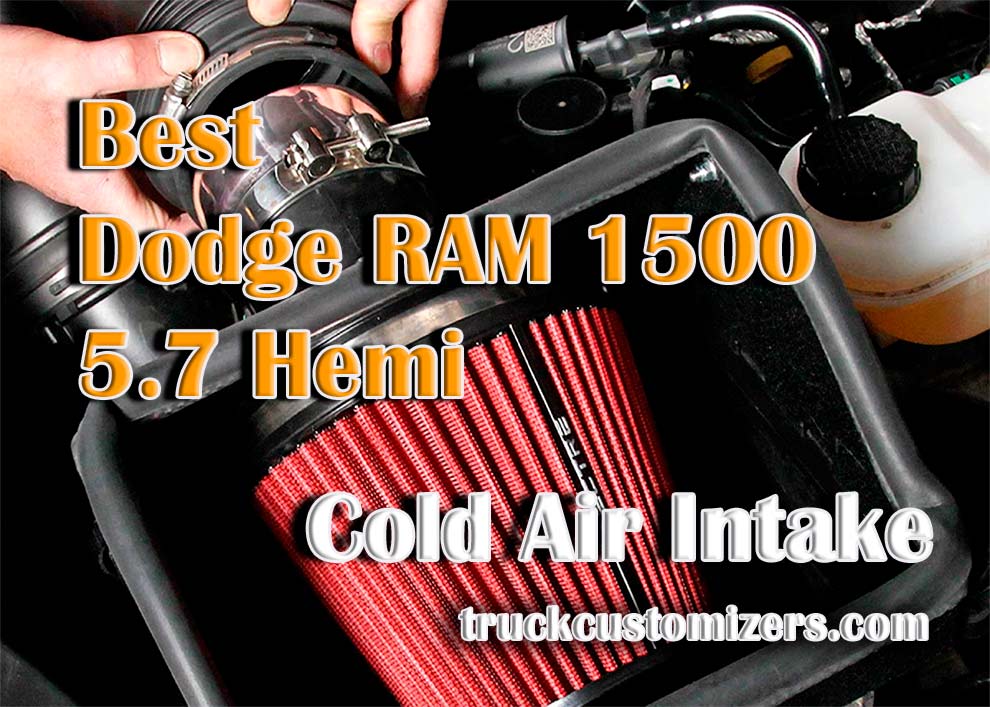Cold air intakes are arguably the best aftermarket upgrade for any vehicle. They are cheap, sound great, and vastly improve the airflow, keeping the engine from overheating. On top of that, air kits boost the overall performance. You can expect to gain extra HP/torque, see an improvement in acceleration, and fuel efficiency. More good news: cold air intakes come packed with all the necessary hardware and are very easy to install.
You won’t need an extra set of hands for that. And what about tuning? Will it be able to maximize the efficiency, or not? Can you do it in your own garage, or will a visit to an auto shop be necessary? And is there a way to make a new intake less noisy? Join me, and let’s find the answers to all these questions together!
What’s the Idea behind Tuning a Cold Air Intake?
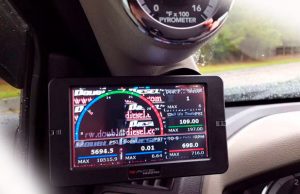 Let’s get one thing straight from the beginning: we’ll actually tune the vehicle, not the air intake. More specifically, we’ll tune the on-board computer. So, why do the experts recommend going through with this? Won’t the new intake tube work properly without it? The short answer – yes, it will. The vast majority of aftermarket gear, including cold air intake systems, doesn’t require any programming to operate.
Let’s get one thing straight from the beginning: we’ll actually tune the vehicle, not the air intake. More specifically, we’ll tune the on-board computer. So, why do the experts recommend going through with this? Won’t the new intake tube work properly without it? The short answer – yes, it will. The vast majority of aftermarket gear, including cold air intake systems, doesn’t require any programming to operate.
Therefore, if your vehicle is compatible with the air kit (you can check that in the specifications), and it’s a direct, bolt-on, OE-type fit, you won’t have to do any “magic” to make it fit. The new air kit will not damage the engine, the exhaust system, or any other part of the car in any way. Besides, a decent-quality tuner slash programmer can cost a lot (up to 400 US dollars, or even more).
Tuning does have its pros, of course. Mainly, it will re-calibrate the various systems and mechanisms so that they “cooperate” with the new air intake better, boosting the efficiency and squeezing all the juices from your new setup. If that’s what you’re going for, then yes, a tuner is a must. But, again, I want you to know that tuning doesn’t make a gigantic difference, even though you will have to pay big bucks for the device.
Air Intake Tuning: Step-by-Step Guide
Alright, now that we’ve got the basics out of the way, it’s time to talk about how to tune a cold air intake. Unlike the programmers of the past, modern-day tuners are very user-friendly: there’s very little that you – the driver – have to do. Tuners are plugged into the vehicle’s computer. And the first thing I want you to run is a full diagnosis. That’s right: these devices are also great for troubleshooting.
 They can reveal many potential issues with the car and help you deal with it all right there and then, not letting a small problem grow into something more serious. After the diagnosis, we can get more specific. Most tuners come with built-in presets that were designed for certain “scenarios”. Some aim at improving fuel efficiency; others maximize air filtration/flow, boost HP/torque, and more.
They can reveal many potential issues with the car and help you deal with it all right there and then, not letting a small problem grow into something more serious. After the diagnosis, we can get more specific. Most tuners come with built-in presets that were designed for certain “scenarios”. Some aim at improving fuel efficiency; others maximize air filtration/flow, boost HP/torque, and more.
Sadly, the most advanced and beneficial presets aren’t free. They’re available on the manufacturers’ official websites, but you’ll have to pay to get them. So, what exactly should you do with the tuner after installing a cold air intake? Re-calibration is your answer. Again, you won’t need to have a degree in mechanics to make sense of everything. Just launch a re-adjustment of all the major systems.
I’m talking about the engine, header (if you’ve got one), catalytic converter, muffler, the tires, brakes, and, of course, the cold air intake. Some programmers have presets that were specifically made for launching after installing an aftermarket cold air intake. But, if you don’t have that option, start all the individual calibration settings separately instead.
Depending on the device, your car’s computer, and the number of aftermarket gear installed, the tuning process can be done in 15 minutes. Or, it can keep running for five hours straight. On average, a programmer gets its job done in an hour, or even quicker. It will signal once the calibration is done – don’t turn the device off even if it’s taking too long to get things done.
The tuner has a very important job: to balance five different components of the vehicle: exhaust, ignition, fuel management, intake, and forced induction. So, it’s totally normal for it to be a bit slow.
Heat Shields: What are they all about?
One of the most popular questions online is “Do You Have to make a heat shield for air intake, or not”? Well, no, you don’t absolutely have to make it. You could, of course, cut some plastic and turn it into a box, but that will take a lot of effort. Instead, I recommend investing in an air kit that will include not only the intake tube but also an air filter and a decent heat shield. Now, what’s the deal with the heat shield, anyway?
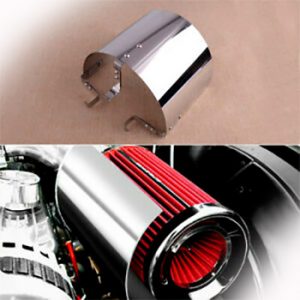 Essentially, it’s a big box or housing that has two jobs: to keep the cold outside air from escaping and to block the hot air coming from the engine. That’s pretty much all you need to know about this. Oh, and by the way, when scrolling through different cold air intake kits, make sure the housing is crafted from high-grade plastic and is large enough to accommodate all the cold air.
Essentially, it’s a big box or housing that has two jobs: to keep the cold outside air from escaping and to block the hot air coming from the engine. That’s pretty much all you need to know about this. Oh, and by the way, when scrolling through different cold air intake kits, make sure the housing is crafted from high-grade plastic and is large enough to accommodate all the cold air.
Roaring Sounds: Good or Bad?
Here’s the thing: most people like the roaring sound of an aftermarket air intake. It completely changes the engine’s tone, giving the vehicle a beefy attitude thanks to the increased airflow. This is especially true for the fans of off-roading and racing. However, if you’re not planning on turning your car into a beast and just want to improve its overall performance, the aggressive sound might be a big turn-off.
Sometimes, the loud air kit gets mixed up with the growl of an aftermarket exhaust system, giving you one big headache. That usually happens upon acceleration, when you’re pushing the pedal hard. Now, you can always put the restrictive factory system back in, but that’s not really an option. So, here’s my guide on How to quiet down cold air intake. Pay attention, and watch closely!
Learning how to Dampen the Noise
Arguably, the cheapest, quickest, and most effective way to keep the noise down is to use some sort of a sound absorber. Dynamat is a great choice, as it’s very thin, versatile, easy to use, and highly flexible. It was specifically designed to keep road noise and vibration away from the interior. Originally, the idea was to put it behind door panels, below the carpet, and such.
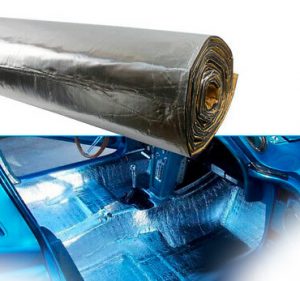 But, since it’s easily stretchable and doesn’t tear, you can also use it to “dial down” the overly aggressive air intake. Just cover both the heat shield and the intake tube with it, and you’ll instantly see an improvement. In my experience, the Dynaliner product works best for this. Or, pick similar stuff that’s available at your local store, like HushMat (also pretty great).
But, since it’s easily stretchable and doesn’t tear, you can also use it to “dial down” the overly aggressive air intake. Just cover both the heat shield and the intake tube with it, and you’ll instantly see an improvement. In my experience, the Dynaliner product works best for this. Or, pick similar stuff that’s available at your local store, like HushMat (also pretty great).
For the sides, I recommend double-wrapping for the best result. The top and the bottom will do with single wraps. And remember: if you only wrap the housing, you won’t get the desired effect. The intake tube is very important; make sure to give it the attention it deserves. I always use spray adhesive that is high-temperature resistant to secure the sound-insulating product. Spray it, apply pressure for 5-10 minutes, and that’s it.
And, give it at least 24 hours to fully cure and dry before you start the car. Now, some folks wrap foil/aluminum tape around the intake tube, but it’s not a very effective solution if you ask me. It might cost less, but, again, it won’t be doing much sound deadening. Only consider this option if you’re low on cash and need to soundproof the cold air intake ASAP.
Conclusion
Ok, that’s all I wanted to talk to you about, dear readers! The most important thing to remember about programming is that it won’t turn a Beetle into a Mustang. However, if you buy a decent device, it will, indeed, optimize performance, making all the individual components in your vehicle work as one. So, if you’re looking to get the most out of the new cold air intake, a tuner will help you do that.
Besides, programmers are excellent diagnostic tools; that means they’ll be a reasonable investment in the long run. Today, we talked about performance optimization and the best ways we can use a tuner. Plus, we learned how to keep air intake noise to a minimum and why heat shields are important. Still got some questions left? Ask away in the comments!


